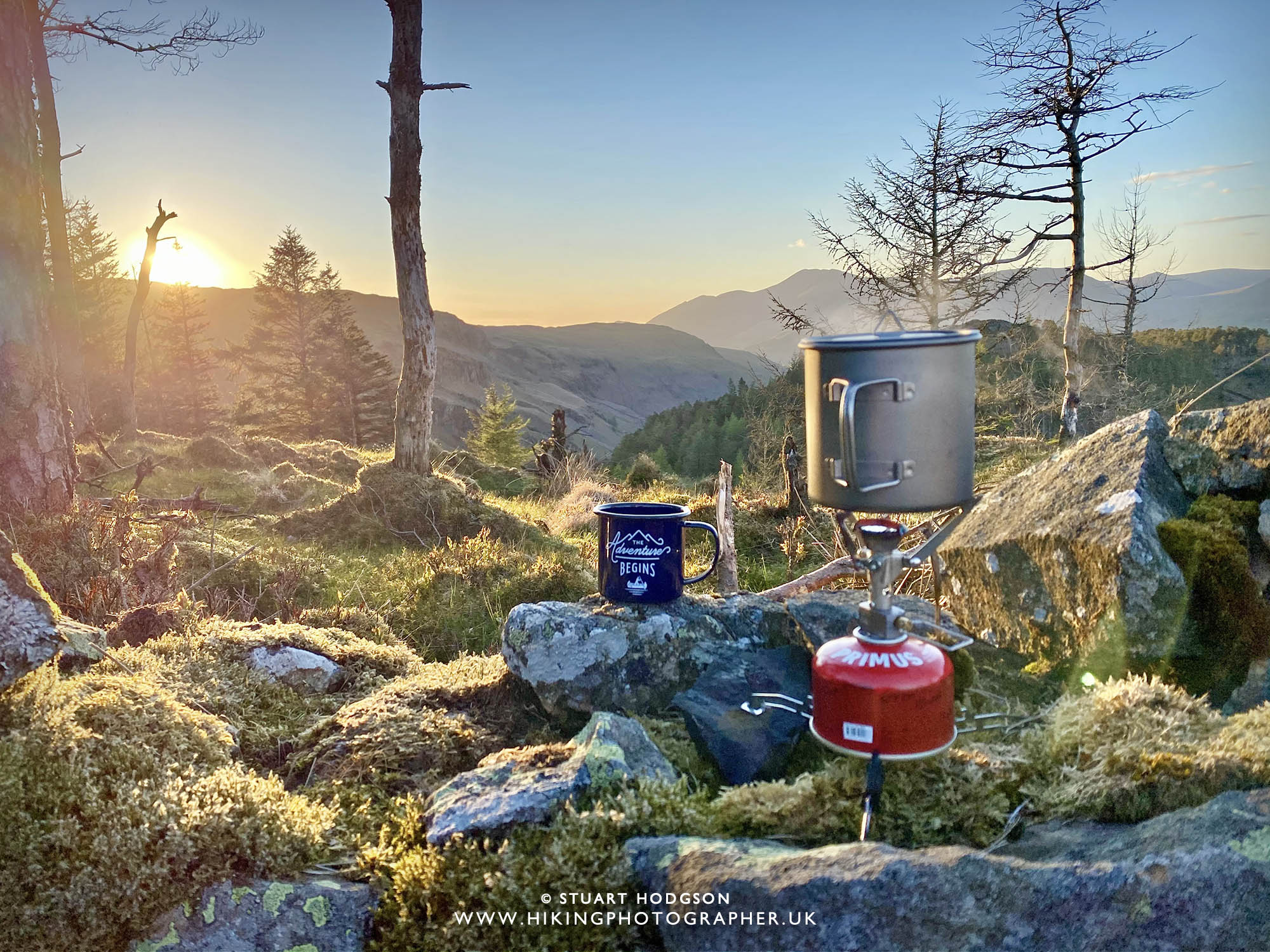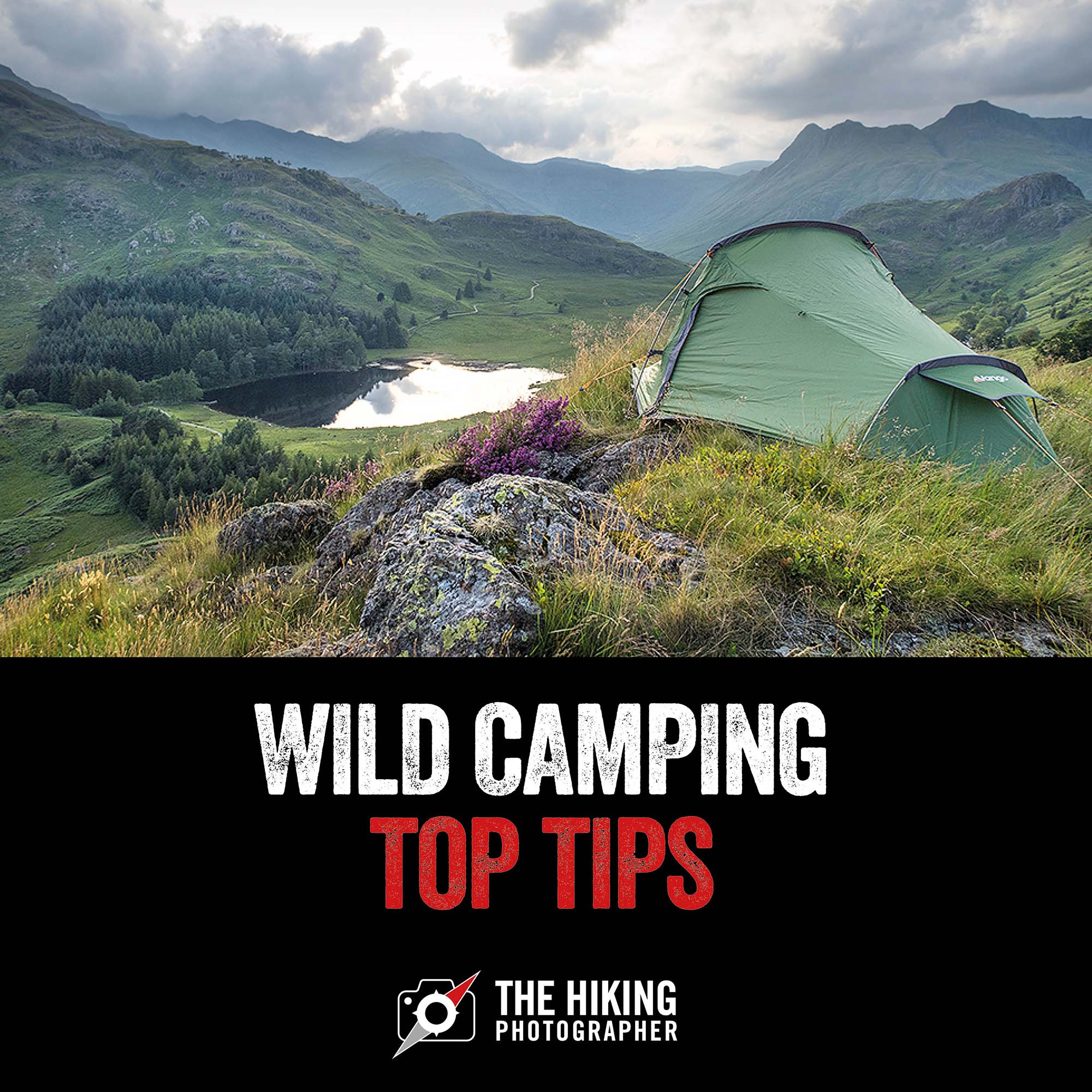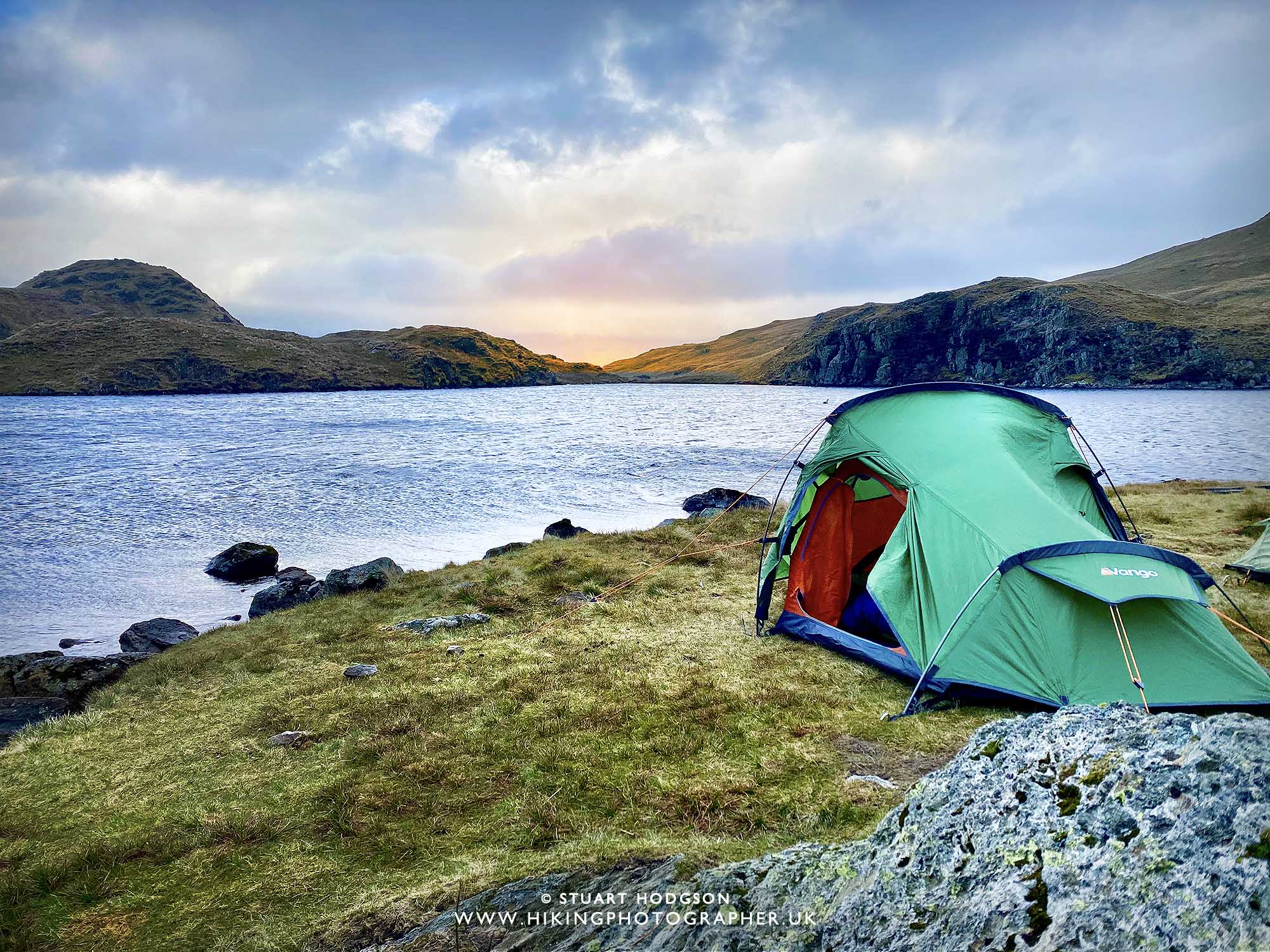 |
| Wild camping lets you see the outdoors in ways and at quieter, more magical times that few others experience |
Wild camping – a guide to what you need TO PLAN THE PERFECT ADVENTURE
I’ve wild camped for many years now and wild camping is a brilliant and unique way to experience the outdoors in a totally new light (literally!) It lets you see amazing sunsets and sunrises in remote locations and if you’re lucky the most star filled skies you’ll ever see. I also also enjoy the peace and slower, simpler way of life, which gives a chance to reset and recharge. As long as you are prepared it’s something I would high recommend to anyone to try.
I often get people who are into hiking and the outdoors say that they’d love to try wild camping, but don’t know how to get started, or what equipment they need and where to go! So below are some tips for beginners and the essential equipment you’ll need.

Being around to see the runrise is one of the best things about wild camping
FIRST THINGS FIRST, KNOW WHAT WILD CAMPING IS & WHAT IS ALLOWED…
So I live in England, and technically all land in England is privately owned so you need to seek permission from a landowner before camping anywhere. However, it is tolerated in remote places, or high on the hills & fells in places like the Lake District and notably it is accepted in Dartmoor National Park under the commons act. In Scotland you can pitch pretty much anywhere!
Wherever you camp, it is vital to be responsible, which means being considerate to locals and the environment (and definitely leaving no rubbish after your visit) If we are responsible – it doesn’t tarnish the name of wild campers and avoids bad press and further crackdowns on wild camping. More people it seems are getting into the outdoors, which is a good thing in my humble opinion, as long as we are respectful and responsible. However a small minority of people are spoiling things, by trashing some places and peeing off locals – which is out of order really! So before cracking on with my tips, I feel I must also be responsible and try and educate others, especially if you are new to wild camping. I know it can seem really adventurous if you haven’t done anything like camp outside of a campsite before, but please take note of the points below:
WILD CAMPING - THE BASIC RULES:
BE CONSIDERATE & LEAVE NO TRACE
- Leave no rubbish at all, if you can carry it with you - you can carry it back! This is becoming a big problem of a small minority - who are coming to be termed 'fly campers'. There is nobody to clean up after you out in the wilds - so your rubbish will stay for years & years, being not only an eye sore - but being a danger to wildlife and polluting natural areas an damming it more likely wild camping will be clamped down on further
- Camping at ground level, next to a lake or in a field, near a road or buildings IS NOT wild camping (locals really don’t like this and there is a good chance you will be moved on by police or wardens - and it's no fun looking for another camp spot in the dark!)
- In the Lake District, wild camping is tolerated above 400m, or above the highest fell wall - when you are well out the way from anyone else. If you can see people & houses and cars - they can see you and won’t be happy, so ensure you pitch in spots which are well out the way.
- Ensure you are considerate to others, which means pitching late and leaving early, and only stay for 1 night
- Don't be a nuisance to others which means keeping the noise down - people wild camp to get a bit of peace and quiet. If you want to have a bit of a drink and party - there are other places for that
- If you can’t fit everything in your rucksack - then it’s not really wild camping. For me, the stuff you take wild camping should be much less than when you go camping on a campsite - it's a different type of camping and the simplicity enhances the experience. I also think the most rewarding wild camping experiences are when you feel like you are remote, reaching those spots that are more of a challenge - so a hike of at least an hour is a must or you're cheating!
- Do not have fires or BBQ’s - it scorches the earth! BBQ's are difficult to dispose of so often get left (a big problem), and fires and scorched earth looks a right mess for others that follow, which takes years to recover. It’s also a potential cause of wild fires in dry conditions. I know people have the ideal of a wild camp next to a fire. But there's no need for it - you can't carry enough wood for a substantial fire, it stinks your clothes and leaves a big mess. Definitely do not chop down tree's for firewood too - this isn't sustainable.
- Above all - Follow the simple rule - leave no trace. This keeps natural beauty spots looking pristine, and stops giving wild campers a bad reputation (if we don’t look after these places - there’s a chance National Park Authorities will clamp down more strictly
- Finally, this can sound all negative. I think people getting into the great outdoors is a good thing - but a minority are spoiling it, trashing places and giving all wild campers a bad reputation. So it's up to all of us (most outdoorsy people are decent!) to encourage more responsibile & considerate use of the outdoors through our social media activity alongside photos of our outdoors adventures . If we each do our bit, it spreads like ripples through a pond and these natural places will stay pristine for everyone to enjoy

Unfortunately sights like this are a growing occurance, especially in places like the Lake District. Unprepared campers leaving loads of rubbish behind, including tents, remnants of fires and a load of other crap. This is the opposite of leaving no trace and is what is giving wild campers a bad name. Please don’t be one of these idiots – take only what you can carry on your back, leave no rubbish at all, and just leave the place as you found it for others to enjoy. It’s simple stuff really.

Now you understand a bit more about responsible wild camping – now lets get onto how you can plan your best experience…
WILD CAMPING BEGINNERS GUIDE
GET THE RIGHT GEAR & TEST IT OUT SAFELY
The first thing you’ll need is to get the right gear, as you’ll be carrying it all on your back, so you’ll need lightweight equipment. It doesn’t have to cost a fortune, but the cheapest gear won’t quite cut it – as it’s usually bulky & heavy. Below you will see a more extensive kit list recommendation – but the key bits of kit really are: The Tent, Sleeping Bag, and Mattress – these are your key investments. Read more on that below.
TEST CAMPS
Once you have your kit in place – I would suggest for absolute beginers to then book yourself on a basic campsite – and soley rely only on your kit that you can carry on your back in your big rucksack. The challenge being you can’t use anyting else that isn’t in your rucksack and you can’t use any campsite facilities (well maybe the toilet haha). After using your kit you’ll have a good idea how to put your tent up, if your sleeping bag is warm enough and mattress comfortable enough and if you have all the other little bits of kit you need. Better to learn about your kit on a campsite rather than in the middle of nowhere. After a test camp in the relative comfort of a campsite, then consider doing a wild camp in a location that isn’t that remote – so if worse comes to worst you can bail. Note – choose spots that are legal (or tolerated!) Somewhere remote, relatively high and well out the way.
LEARN ABOUT TEMPERATURES & WEATHER FORCASTS
Learning about what temperatures are like on a night camping and what you need to keep you warm in those temperatures are key. What would keep you warm at 10c at night is very different at what will keep you warm at 5c, or 0c! If you have ever been camping before – what were the temperatures like? Were you comfortable? Can you carry on your back everything you need to keep you warm at night. Being cold out on a wild camp is no fun at all, and potentially dangerous if temperatures drop too much. Little tip – I’m a bit of a fair weather camper – I like to chill outside the tent for quite a while and soak up the views. Night time temperatures of at least around 9/10c are ideal for me. Likewise – while being cold is no fun, being wet is no fun either (so get your head around weather forecasts and weather apps to pick the best weather for your particular trip) Another tip, I’ve camped loads now – and take with me a digital thermometer – so I know what the actual temperatures are – and learn to know what kit & laters I need for given temperature forcasts!
Wild camping equipment list:
Getting the right gear is a big part of a successful wild camping trip. The absolute essentials and what I recommend spending as much money as possible on are your tent, sleeping bag, sleeping matt & rucksack to carry everything in! These are the key investments, and will keep you warm & dry in all weather conditions.
The Tent
Sleeping bag
Sleeping matt
Rucksack
 |
| What a stunning location on this wild camping trip in the Lake District |
Electrical equipment essentials:
 |
| Getting your cooking equipment right is a key part of an enjoyable wild camp. |
Cooking equipment:
 |
| Wild camping is an experience I’d recommend to anyone who loves walking and the outdoors! |
Food & drink
• Water – Its vital to take enough drinking water with you on your trip – I always carry with me 2 litres of water. If you know you are going to be camping where there is fresh water such as a stream from the fell tops – then you might want to use that to cook with after boiling it to be safe. Alternatively there are quite a few good instant water filtration options out there such as the Swayer filters, the Grawl Ultralight and the LifeStraw options. My personal favourite is the Katadyn BeFree as there’s no pumping required like other water filters, you can drink straight from the bottle and for just my needs it’s my favourite ‘easy-to-use’ water filter and a great little product investment which costs about £35 and saves me lumping a load of bottled water about on my camps – you can find out more and buy the Katadyn BeFree here
• For breakfast – Again I’ll keep it simple – I’ll take a porridge pot or breakfast pouch which just requires hot water and add a cereal bar into the mix.
|
Wild camping is an experience everyone should try once – just make sure you take everything you need to make it enjoyable!
|
Toileteries
Clothes
- Warm Coat / Down Jacket – it does tend to get chilly at night when wild camping, evening summer, and it’s no fun being cold when all you want to do is sit around the tent and even star gaze. For colder conditions I like to take a lightweight Down jacket, which gives you excellent warm to weight ratio, such as the Rab Microlight Alpine
- Insulating mid-layers – again depending on the temperatures- you may want to wear, or pack in your rucksack, extra layers such as fleeces or soft shell jackets.
- Waterproof Jacket – this is a must, especially in the UK when you never know when it will rain! Unless the forecast is definitely no rain – I’ll take with me my fully waterproof Berghaus Men’s Maitland Gore-TEX Hiking Jacket – it’s good value for such a technical jacket and being made of Gore-TEX means it is completely waterproof. If looked after it will be a good investment. It comes in both men’s and women sizes.
- Waterproof Over trousers – I also keep in my rucksack my waterproof over-trousers and the Berghaus Paclite GORE-tex trousers that I use are fully waterproof to keep you completely dry and pack away in a handy little stuff sack no bigger than a can of pop!
- Thermals – I take thermals too to sleep in – long-johns and a top, again better to be too warm and take them off than too cold and they don’t take up much room
- Spare socks – it’s nice to put fresh ones on in the morning
- Flip flops – it’s nice to give the feet an airing around the tent, especially after having boots on all day and these don’t take up much room!
 |
| Here’s everything you need to know to plan the perfect wild camp |
Wild camping top tips
Get the Wild Camping location right
Whenever I’m out on day walks on the fells – I’ll make a note if I see somewhere that I think would be a good spot for a wild camp. I also search online for wild camping blog posts/videos/photos to get ideas. I personally prefer somewhere high-up with great views overlooking a body of water – but not too close to the water in summer where midges can be a problem! If it’s overlooking a tarn or lake even better, and my favourite places are elevated where you will get great views of sunsets & sunrises.
LEGALITIES OF WILD CAMPING
WILD CAMPING – Tent pitch spot
Like most tips on pitching a tent – whether on a campsite or out on the fells – pick a bit of dry, flat ground so you don’t end up moving around in your tent. If you’re a beginner you may want to avoid ridges and summits as the weather conditions can change quickly in these exposed positions, so build your skills in more sheltered spots. To avoid midges in the summer months – stay away from water or boggy areas. You’ll learn how to tell boggy areas by the plant life that grows on them and how it feels underfoot. Also take into consideration the weather conditions and importantly the forecast – is it likely to get windier in the night into the next day (even though it’s calm when pitching your tent)? Is the wind direction forecast to change direction over the night? What would happen if it suddenly got windy? So pitch somewhere that will be sheltered from the wind. Also if it’s forecast to rain (or snow) – then is your spot going to turn into a bog or snowdrift? Could streams of rivers swell and engulf your tent? A bit of raised ground that is flat and sheltered on all sides, or certainly from the wind direction is ideal.
The weather
WILL YOU BE SAFE?
Further reading:
This article from The Great Outdoors Magazine is a useful one for beginners and answers the most common questions such as, Is it legal? Is it safe? And what if I need the toilet for a number two? 🙂 View the article: Beginner Wild Camping questions answered
Wild Camping spots ideas:
POSTS YOU MIGHT LIKE
I hope this has helped and inspired you to plan a wild camp and an unforgettable adventure!









0 Comments